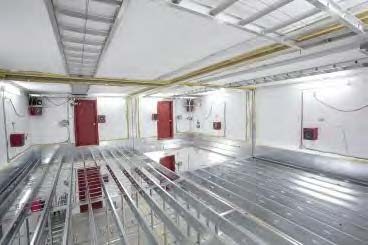Flanking Sound Transmission in Light Frame Steel Construction

(Taken with permission from ArcelorMittal Dofasco's Steel Design, Spring 2016 issue)
The North American sheet steel industry is in the final stages of a multi-year research program measuring the flanking sound transmission in light frame steel construction. This is in response to evolving building code requirements and the growing market for mid-rise light frame steel buildings.
There are four key requirements for mid-rise light-frame steel construction: structural, fire, thermal and acoustics. Each of these requirements is currently addressed under existing building codes, but these codes are constantly evolving. The National Building Code of Canada (NBCC) is responding to the demands of building owners and residents for improved acoustic separation between dwelling units. (Figure 1) The current method to assess acoustic performance only considers the direct sound transmission though the wall or floor (STC) and ignores any flanking transmissions. The 2015 edition of NBCC will address this situation by requiring Apparent Sound Transmission Class (ASTC) ratings of assemblies.
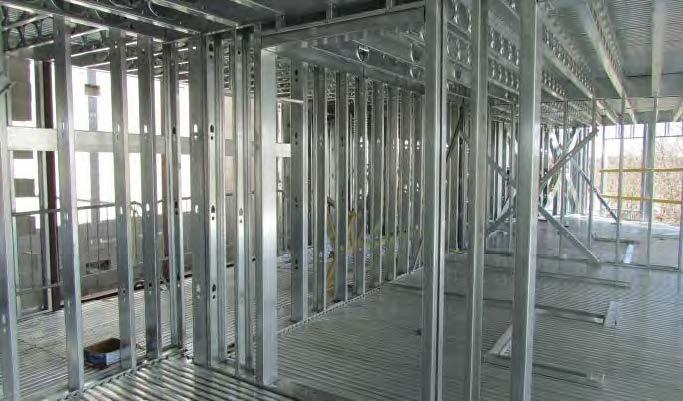
The simplest way to measure sound transmission between adjacent rooms considers only the direct sound path through the wall or floor separating the spaces. Implicit in this approach is the simplistic assumption that sound is transmitted only through the obvious separating assembly – the separating wall assembly when the rooms are side-by-side, (Figure 1) or the floor/ceiling assembly when rooms are one above the other (Figure 2). In reality the airborne sound excites all the surfaces in the source space, and all of these surfaces vibrate in response.
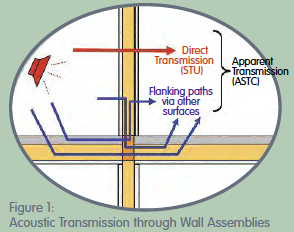
Some of this sound energy is transmitted across the surfaces abutting the separating assembly, but a significant percentage can be transmitted through the junctions where these surfaces join the separating assembly. Occupants of the adjacent room can actually hear a combination of the direct and flanking sound transmissions.
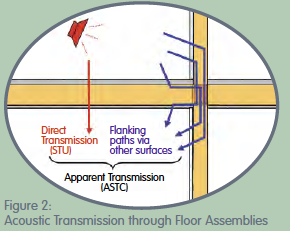
This research program will provide important data on the acoustic performance of light frame steel construction. To facilitate the dissemination of this work, a guide is being developed by the National Research Council of Canada in addition to a web-based modeling tool called soundPATHS. The guide and soundPATHS will facilitate designs to provide enhanced levels of sound insulation, and it should be generally applicable to construction in both Canada and the USA.
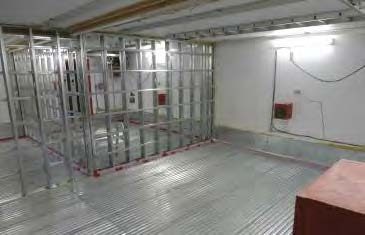
For more information on the NRC acoustic flanking test facility, visit their website.
This work is being funded jointly by the American Iron and Steel Institute (AISI), Canadian Sheet Steel Building Institute (CSSBI), Steel Framing Industry Association (SFIA) and the Certified Steel Stud Association (CSSA).
